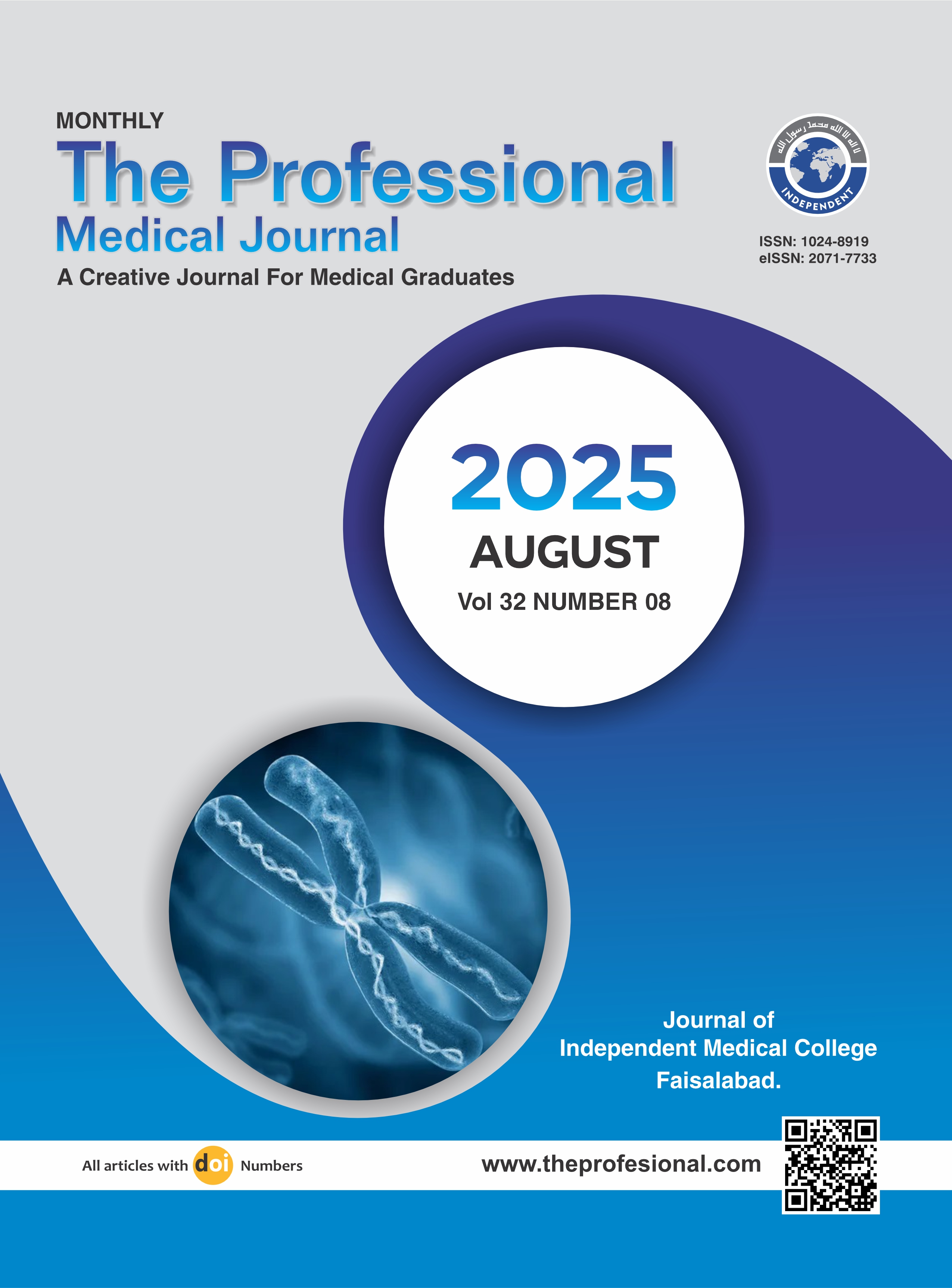Comparison of neonatal outcome in laboring patients with fetal distress on cardiotocography having clear liquor versus meconium-stained liquor.
DOI:
https://doi.org/10.29309/TPMJ/2025.32.08.9111Keywords:
Apgar Score, Cardiotocography, Fetal Distress, Meconium-stained Amniotic Fluid, Neonatal Outcomes, NICU AdmissionAbstract
Objective: To compare neonatal outcomes in laboring patients with fetal distress on CTG who had either clear or meconium-stained amniotic fluid. Study Design: Comparative Cross-sectional study. Setting: Department of Gynecology, MNCH Hospital Faisalabad. Period: July 2024 to December 2024. Methods: Included 158 laboring patients diagnosed with fetal distress on CTG, divided into two groups: Group A (clear liquor, n=79) and Group B (meconium-stained liquor, n=79). Fetal distress was defined by CTG abnormalities, and neonatal outcomes were assessed based on the Apgar score (<7 at 5 minutes) and NICU admission within 12 hours of birth. Stratified analyses were performed to evaluate the impact of demographic and clinical variables. Results: The groups were comparable in terms of age, gestational age, parity, duration of labor, and mode of delivery. Poor Apgar scores were observed in 59.5% of Group A and 57.0% of Group B (p = 0.747). NICU admissions were slightly higher in Group B (69.6%) compared to Group A (65.8%), but the difference was not statistically significant (p = 0.610). Stratified analyses showed no significant differences in neonatal outcomes based on demographic or clinical factors. Conclusion: This study found no significant differences in neonatal outcomes between patients with fetal distress on CTG and clear or meconium-stained liquor. The findings emphasize the importance of individualized labor management and suggest that MSAF, while a potential risk factor, does not independently dictate adverse outcomes when CTG abnormalities are present.
Downloads
Published
Issue
Section
License
Copyright (c) 2025 The Professional Medical Journal

This work is licensed under a Creative Commons Attribution-NonCommercial 4.0 International License.


